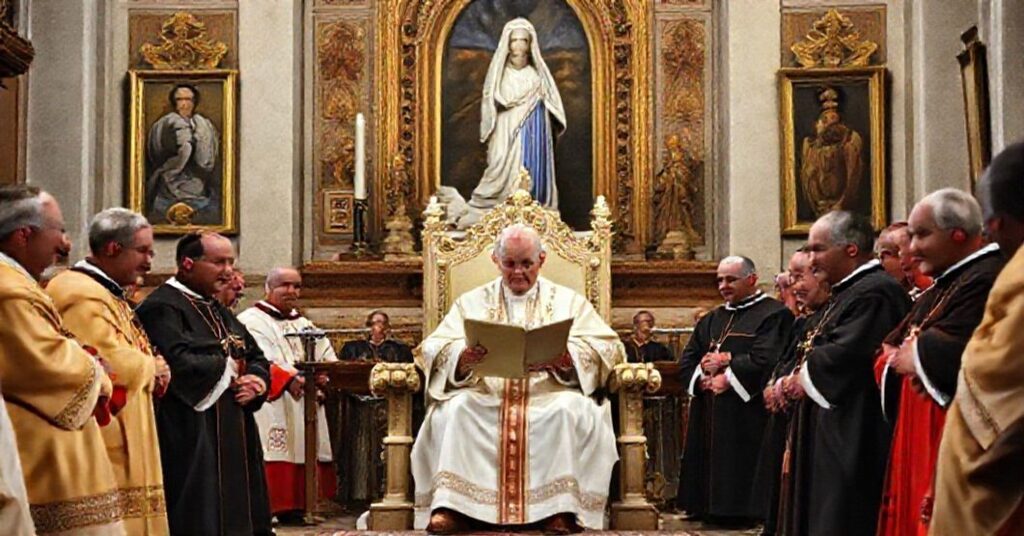Pientissima Virgo (1959.01.16)
The text under review, issued by the usurper John XXIII on January 16, 1959, confers the title and privileges of a Minor Basilica upon the church of the Blessed Virgin Mary of the Seven Sorrows in Pescara. It rehearses local Marian piety, recalls Pius XII’s designation of Our Lady of the Seven Sorrows as co-principal patroness of the diocese, praises the Capuchin custodians, and—“out of the fullness” of supposed apostolic power—elevates the sanctuary to basilica rank, granting all the rights and privileges attached to that title.
In one page of apparently edifying Marian devotion, we see the cold legalization of a counterfeit authority, the instrumentalization of true Marian titles to crown the nascent conciliar revolution, and the blasphemous claim that a manifestly modernist intruder can legislate in the name of Christ and His Church.










